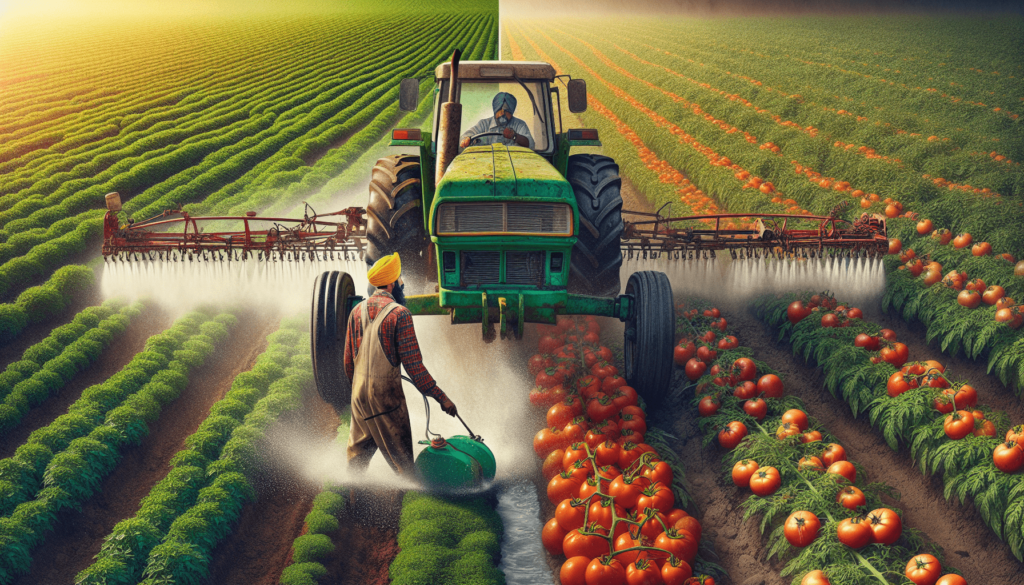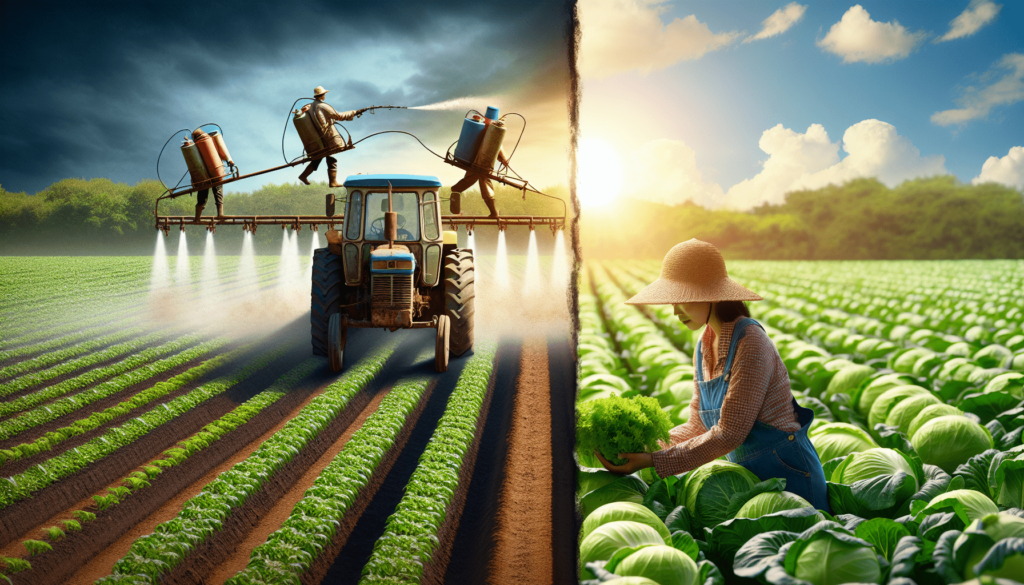What Are The Considerations For Transitioning From Conventional To Organic Farming?
Transitioning from conventional farming to organic farming is a big decision that can have various implications for your farm and the environment. There are several important considerations that you need to take into account before making the switch. In this article, we will discuss these considerations in detail to help you make an informed decision.

Understanding the Difference Between Conventional and Organic Farming
Before you decide to transition from conventional to organic farming, it’s essential to understand the fundamental differences between the two approaches. Conventional farming relies on synthetic fertilizers, pesticides, herbicides, and genetically modified organisms (GMOs) to maximize crop yields. On the other hand, organic farming focuses on using natural methods to enhance soil fertility, control pests, and grow crops without synthetic chemicals.
Understanding the distinction between conventional and organic farming will help you determine if transitioning to organic farming aligns with your values and goals as a farmer. Organic farming practices may require more labor and time-intensive methods, but they can have long-term benefits for soil health, biodiversity, and human health.
Assessing Your Farm’s Readiness for Organic Certification
One of the critical considerations for transitioning to organic farming is assessing your farm’s readiness for organic certification. Organic certification is a rigorous process that involves adhering to specific standards for soil health, crop rotation, weed management, pest control, and livestock practices. Before applying for organic certification, you need to ensure that your farm meets all the necessary requirements outlined by the certifying body.
Conducting a thorough assessment of your farm’s current practices, inputs, and infrastructure will help you identify areas that need improvement or modification to comply with organic standards. It’s essential to have a clear understanding of the certification requirements and develop a plan to transition your farm gradually towards organic practices.
Developing a Transition Plan
Developing a comprehensive transition plan is essential for successfully transitioning from conventional to organic farming. A transition plan outlines the steps, timelines, and resources needed to implement organic practices on your farm gradually. The transition period typically ranges from one to three years, depending on your region and farm size.
Your transition plan should address key aspects such as soil fertility management, pest and weed control, crop rotation, animal husbandry, and record-keeping. It’s crucial to consult with experienced organic farmers, extension agents, or agronomists to develop a customized transition plan that suits your farm’s specific needs and conditions.
Evaluating Market Opportunities for Organic Produce
Another essential consideration for transitioning to organic farming is evaluating market opportunities for organic produce in your region. Organic farming requires a different marketing strategy than conventional farming, as organic products often target niche markets that prioritize sustainability, health, and environmental stewardship.
Researching consumer demand, pricing trends, and distribution channels for organic produce will help you determine the market potential for your farm’s organic products. Consider factors such as local food movements, farmer’s markets, community-supported agriculture (CSA), and direct sales to consumers when exploring market opportunities for organic produce.

Assessing the Financial Implications of Transitioning
Transitioning from conventional to organic farming can have significant financial implications for your farm, especially during the initial stages of the transition period. Organic certification, soil amendments, organic seeds, labor costs, and marketing expenses are some of the financial considerations that you need to factor into your budget when transitioning to organic farming.
Conducting a cost-benefit analysis and financial projection for the transition period will help you assess the economic viability of transitioning to organic farming. Consider seeking financial assistance, grants, or loans from government programs, non-profit organizations, or financial institutions to support the transition process and mitigate financial risks.
Implementing Sustainable Soil Management Practices
One of the core principles of organic farming is maintaining soil health through sustainable soil management practices. Healthy soil is essential for growing nutritious crops, increasing water retention, enhancing nutrient cycling, and promoting beneficial soil microbes. Implementing sustainable soil management practices will help improve soil structure, fertility, and resilience to pests and diseases.
Consider incorporating practices such as cover cropping, crop rotation, composting, mulching, and reduced tillage to enhance soil health and biodiversity on your farm. These practices will help reduce soil erosion, improve soil structure, and enhance nutrient availability for your crops while reducing the reliance on synthetic fertilizers and pesticides.
Implementing Integrated Pest Management (IPM) Strategies
Controlling pests and diseases in organic farming requires a holistic approach that focuses on prevention, monitoring, and intervention through integrated pest management (IPM) strategies. IPM combines cultural, biological, and mechanical control methods to manage pests and diseases effectively without relying on synthetic pesticides.
Developing an IPM plan tailored to your farm’s specific pest pressures, crop rotation, and biodiversity will help minimize pest outbreaks and crop damage in organic production. Encourage natural predators, beneficial insects, and birds to control pests, use crop rotations to disrupt pest life cycles, and apply botanical or microbial pesticides as a last resort to manage pest populations in an environmentally friendly manner.
Adapting Crop Rotation and Diversification Strategies
Crop rotation and diversification are essential practices in organic farming that help improve soil health, prevent pest outbreaks, and enhance crop productivity. Rotating crops with different nutrient requirements, pest vulnerabilities, and root systems can help break pest cycles, suppress weeds, and maintain soil fertility.
Adapting crop rotation and diversification strategies based on your farm’s soil type, climate, and production goals will help optimize yields and resilience to weather fluctuations in organic farming. Consider planting cover crops, green manures, intercropping, or agroforestry systems to diversify your farm’s cropping system and improve its sustainability over time.
Maintaining High Animal Welfare Standards
If your farm includes livestock or poultry production, maintaining high animal welfare standards is essential when transitioning to organic farming. Organic livestock and poultry production have specific requirements for housing, outdoor access, feed quality, and healthcare to ensure the animals’ health and well-being.
Provide access to pasture, fresh water, and shelter for your animals, and avoid using antibiotics, synthetic hormones, or GMO feed in organic livestock production. Implement rotational grazing, biodiverse pastures, and holistic healthcare practices to promote animal health, productivity, and resilience in organic farming systems.
Keeping Accurate Records and Documentation
Organic farming requires strict record-keeping and documentation to demonstrate compliance with organic standards and maintain organic certification. Keeping accurate records of inputs, practices, outputs, and transactions is essential for traceability, audit purposes, and market transparency in organic production.
Develop a record-keeping system that tracks all activities, inputs, purchases, sales, and observations on your farm to ensure compliance with organic certification requirements. Consider using digital tools, software programs, or paper-based logs to organize your records and documentation efficiently while transitioning to organic farming.
Seeking Support and Resources for Transitioning
Transitioning from conventional to organic farming can be a challenging yet rewarding journey that requires dedication, knowledge, and support from experienced professionals and organizations. Seek support and resources from local extension agents, organic farming associations, peer networks, online forums, and educational institutions to access valuable information, training, and mentorship in organic production.
Attend workshops, field days, webinars, and conferences on organic farming to learn about best practices, new technologies, and research insights that can help you succeed in your transition to organic agriculture. Join a community of like-minded farmers, researchers, and advocates who share your passion for sustainable agriculture and organic food production.
In conclusion, transitioning from conventional to organic farming requires careful planning, evaluation, and implementation of sustainable practices that promote soil health, biodiversity, and environmental stewardship on your farm. Consider the key considerations discussed in this article to make an informed decision about transitioning to organic farming and embrace a more sustainable and resilient agricultural system. Remember that every step you take towards organic farming contributes to a healthier planet, healthier communities, and healthier food for future generations.
The article What Are The Considerations For Transitioning From Conventional To Organic Farming? first appeared on https://www.66thlondon.org.
 Previous Post
Previous Post Next Post
Next Post